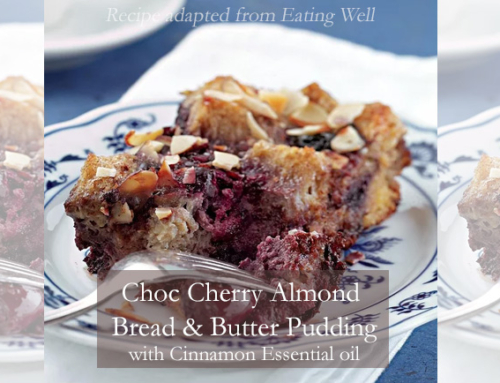There are several things you can count on during Spring.
- Someone you know will start spring cleaning. (There’s always someone who wants to mess it up for the rest of us. I have a theory: if no-one touches a layer of dust, is it even really there?)
- Someone you know will have started a new fitness regime. (Actually, I put my hand up for this one. My new walking routine is going great guns. How about you?)
- And someone you know will start a detox diet or liver cleanse!
Keeping your liver in ship-shape? I’m definitely on board with that.
Even without research, most people have an instinctive feel for key things to steer clear of during a liver detox, such as alcohol, sugar and excess caffeine.
So today, let’s get up close and personal with the liver by focusing more on what to do rather than what not to do.
This mighty device — our largest internal organ and second in the body only to the skin — is many things, including your waste purification plant.
Blood from the digestive system filters through the liver as its first port of call. One of the liver’s biggest jobs is to break down and remove toxins from the blood before they can head elsewhere in the body to do whatever their potential damage might be. The liver even filters toxins in the air we breathe.
According to the Better Health Channel,
“The principal roles of the liver include removing toxins from the body, processing food nutrients and helping to regulate body metabolism. A range of conditions can prevent the liver from performing its vital functions. Culprits include fat accumulation, alcohol misuse, viral infection, iron or copper accumulation, toxic damage and cancer.”
The liver produces bile which is stored in the gall bladder to help break down the fats in our food, and help the uptake of fat soluble vitamins: A, D, E and K.
It’s also responsible for conversion of carbs into glucose for immediate energy and converting it into glycogen stores to use when your blood sugar levels drop.
The liver effectively turns amino acids in the protein we eat into hormones and other body proteins.
But wait — there’s more! When protein is metabolised, ammonia is a toxic by-product. Healthy liver? No problem. It deftly turns the ammonia into urea which passes from the body in our urine.
Our general belief in the liver’s ability to regenerate itself is the stuff of legends. Prometheus was a Greek god whose liver was considered immortal and feasted on daily by Zeus’s giant golden eagle, prompting us to wonder if the ancient Greeks knew about the liver’s capacity for self-repair.
Perhaps this belief lulls us into thinking the liver is bullet-proof. But while we’re talking of legends, let’s not look a gift horse in the mouth.
Interestingly, Greek medicine links the liver and gall bladder with emotions like anger, irritability, frustration, resentment, jealousy and envy. Likewise, in traditional Chinese medicine, the liver governs the smooth flow of qi throughout the body, and stagnation of the flow of liver qi can disrupt emotional flow, producing frustration or anger. It’s fascinating to consider that these same emotions can actually lead to a dysfunction in the liver, resulting in a chicken and the egg scenario.
If this is the case, maybe we should try detoxing the liver by proactively detoxing those cranky-pants feelings? Our post on Young Living Peace & Calming® is worth another read with new eyes.
As for the road more typically travelled, let’s take a look at nutrients known to support your liver and where to find them.
This will also connect you up with The Good Oil Team for our personal support and coaching. We'd love to help you on your journey to vibrant well-being the natural way!
Any questions? Please get in touch via our Contact page.
Chlorophyll
This green pigment in plant cells lightens the load by helping with cleansing toxins from the blood. And if you suspect your system is under a heavy metal load from lead, pesticides and chemicals, your liver will be glad of chlorophyll’s support on that score, too.
Great sources: kale, silverbeet, wheatgrass, micro-algae, spinach and broccoli. Young Living has a tremendous powdered food product called JuvaPower™ which I sprinkle on my mashed spuds and add to the occasional odd-looking smoothie for an acid-binding plant-based boost. It includes chlorophyll-rich spinach and broccoli in its ingredients, along with essential oils of anise and fennel to help with uptake and absorption.
Fun fact: Anise (Pimpinella anisum) is used aromatically to open emotional blocks and recharge vital energy. Could be handy for both approaches to liver well being: nutritional and emotional.
Glutathione
Along with countering heavy metals and some of the negative effects of smoking and alcohol, glutathione detoxifies methylglyoxal, a toxin we produce during metabolism.
Great sources: walnuts, watermelon, avocado and asparagus.
Thyme (Thymus vulgaris) essential oil has been studied for its ability to significantly boost antioxidants and certain glutathione levels. This is one of the reasons it’s included in Young Living Longevity™ essential oil blend and softgel capsules.
Curcumin
Ayurvedic medicine uses curcumin — found in turmeric — to strengthen liver function. Turmeric is a natural liver detoxifier and has been used for thousands of years in traditional herbal medicine in the belief it helps to clear LDL (bad cholesterol) from the liver and enhances function.
Turmeric has long been used as a treatment for depression in Chinese medicine, so it’s another two-pronged approach for support in this area.
This will also connect you up with The Good Oil Team for our personal support and coaching. We'd love to help you on your journey to vibrant well-being the natural way!
Any questions? Please get in touch via our Contact page.
It (almost) goes without saying that great hydration is vital every day, not just on Detox Days. You’ll find some tips on that here. Bottoms up the healthy way!
Enjoy the good oil daily.
The information on this site does not constitute advice. Please consult with your health practitioner. When using any of the products mentioned throughout this site, please be sure to read the labels and follow their suggestions for safe use.






